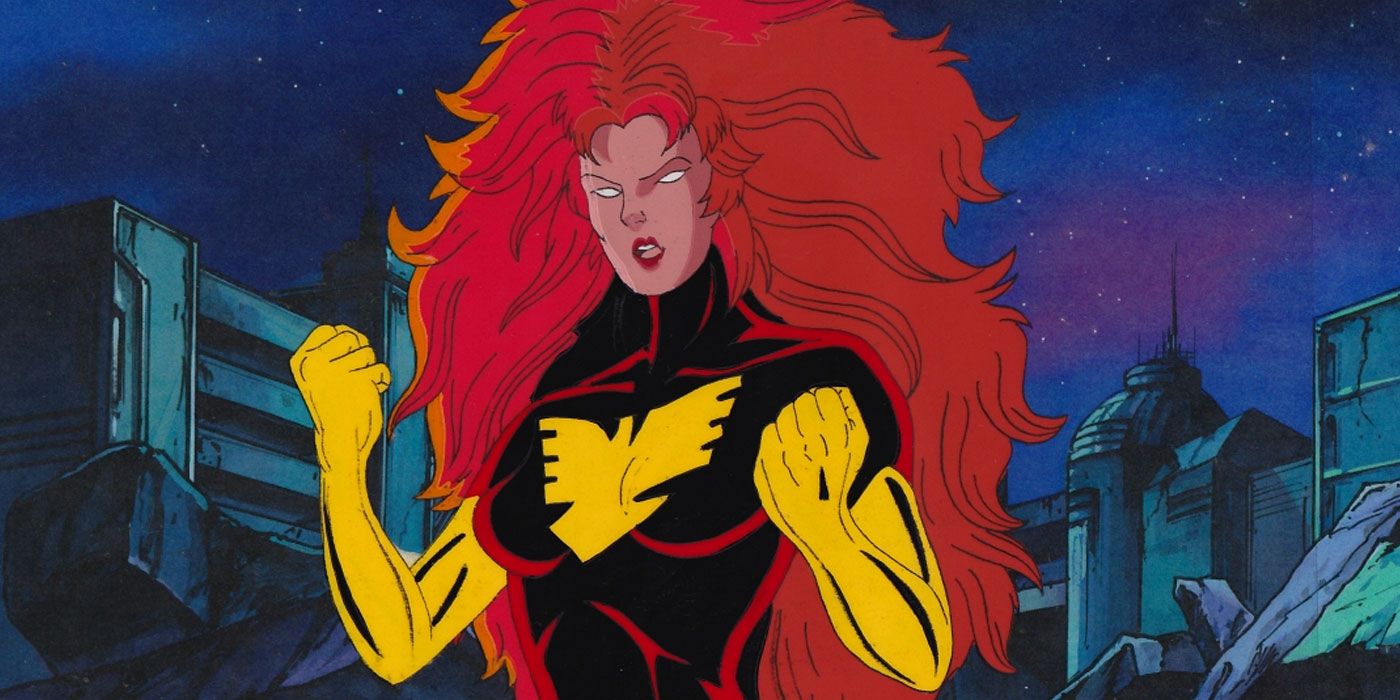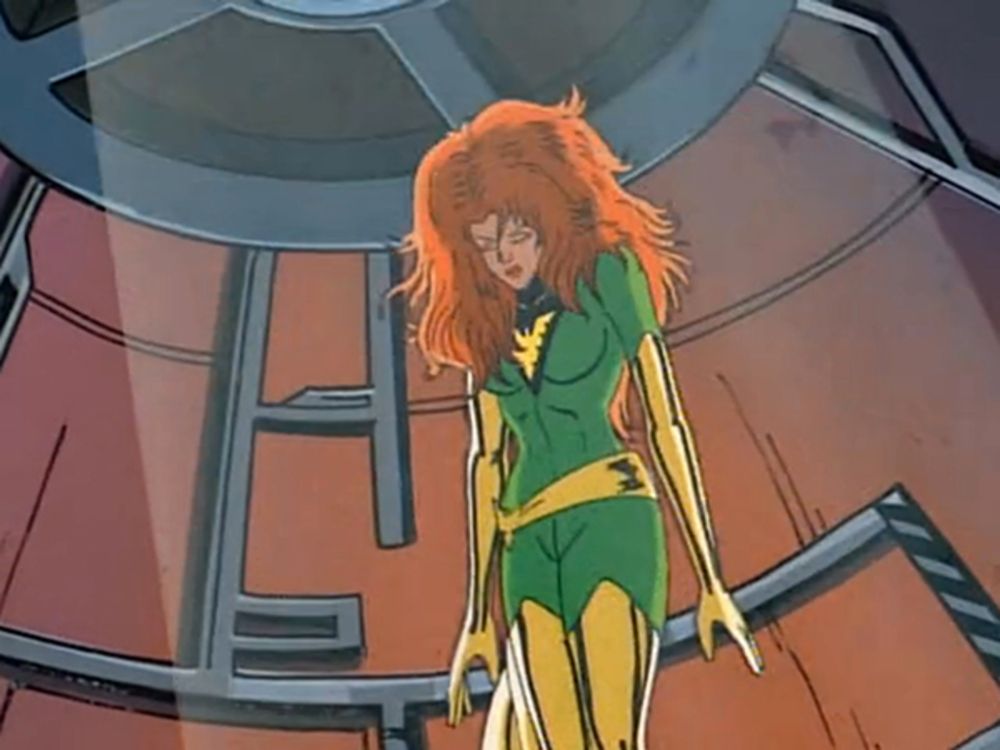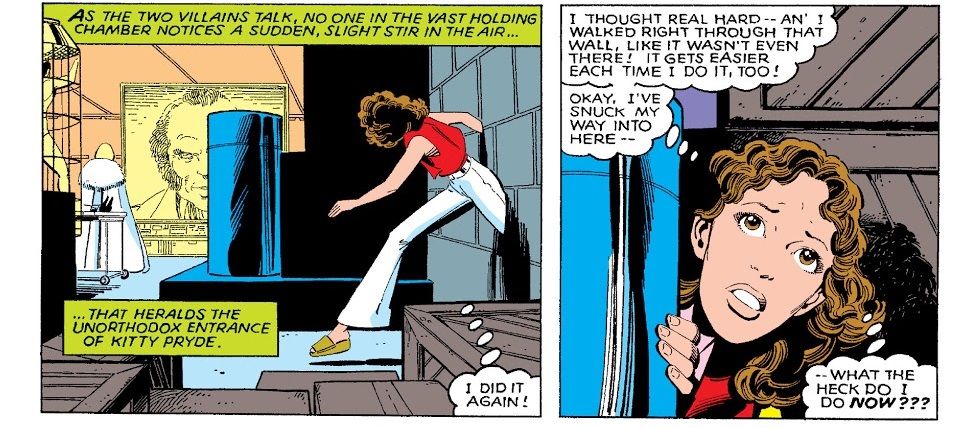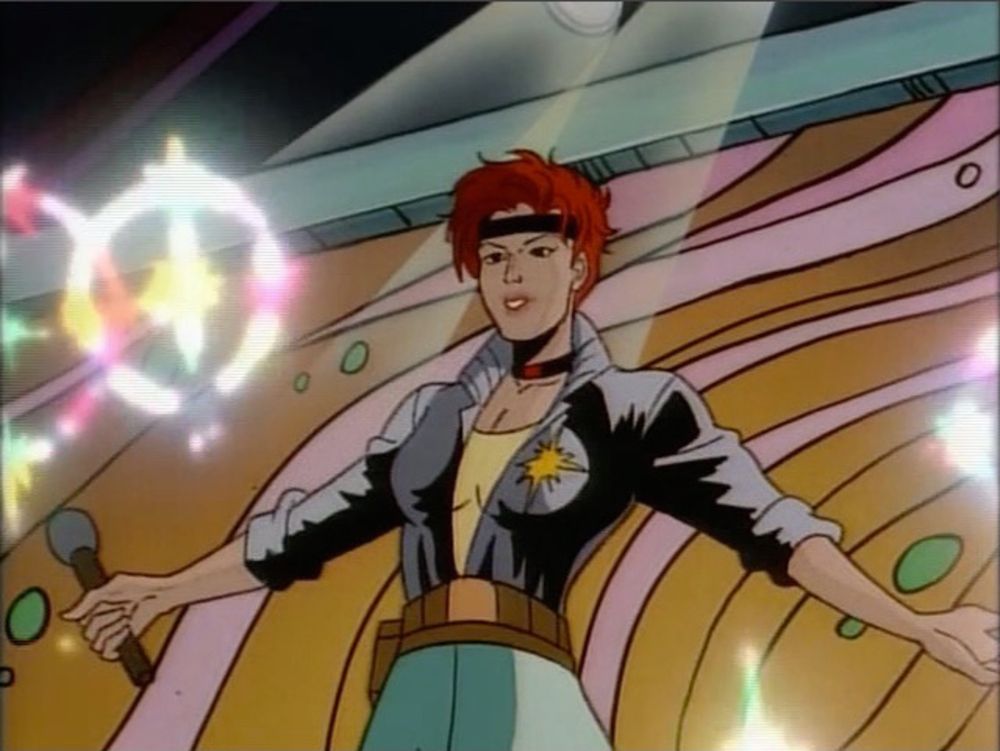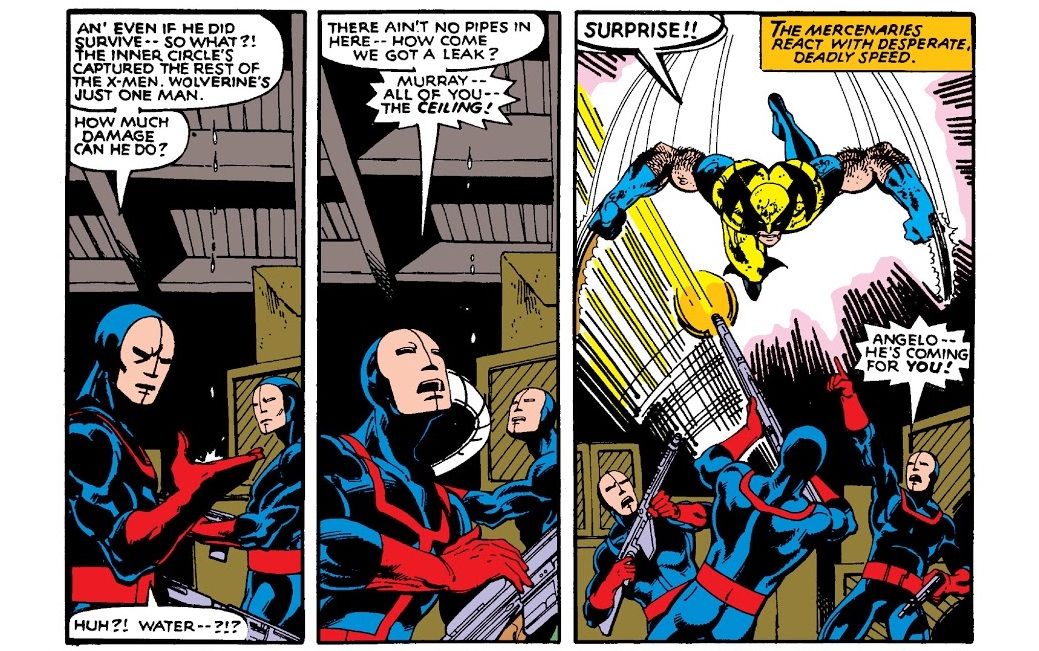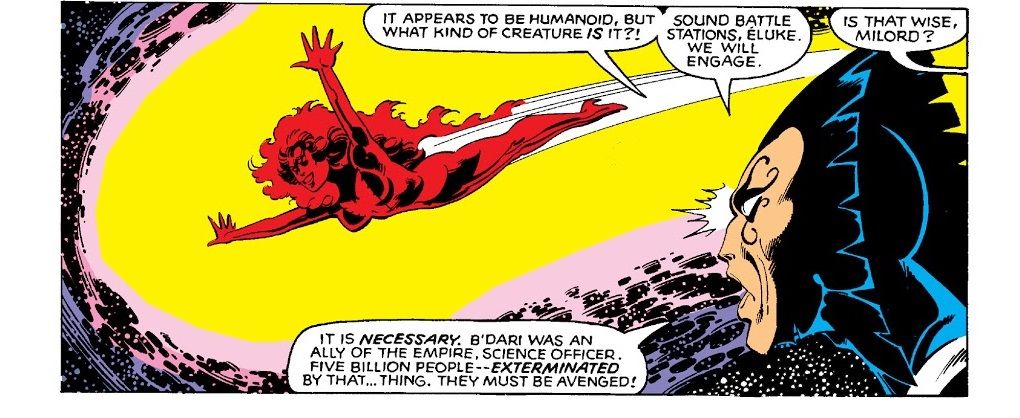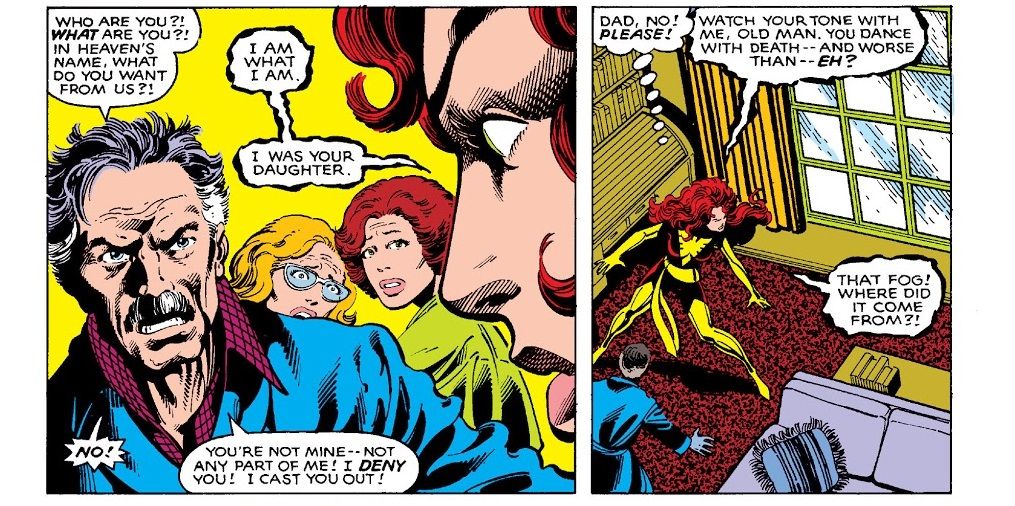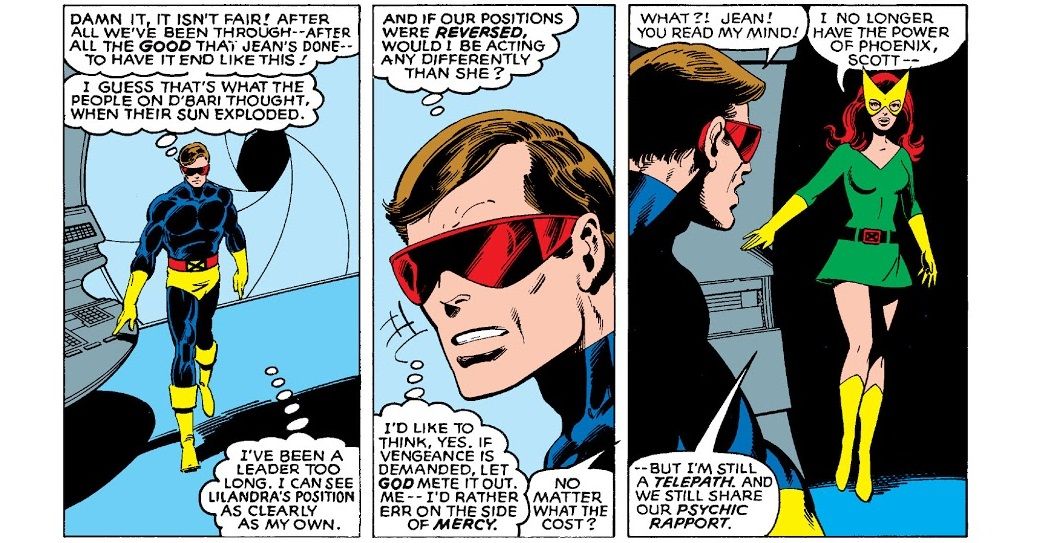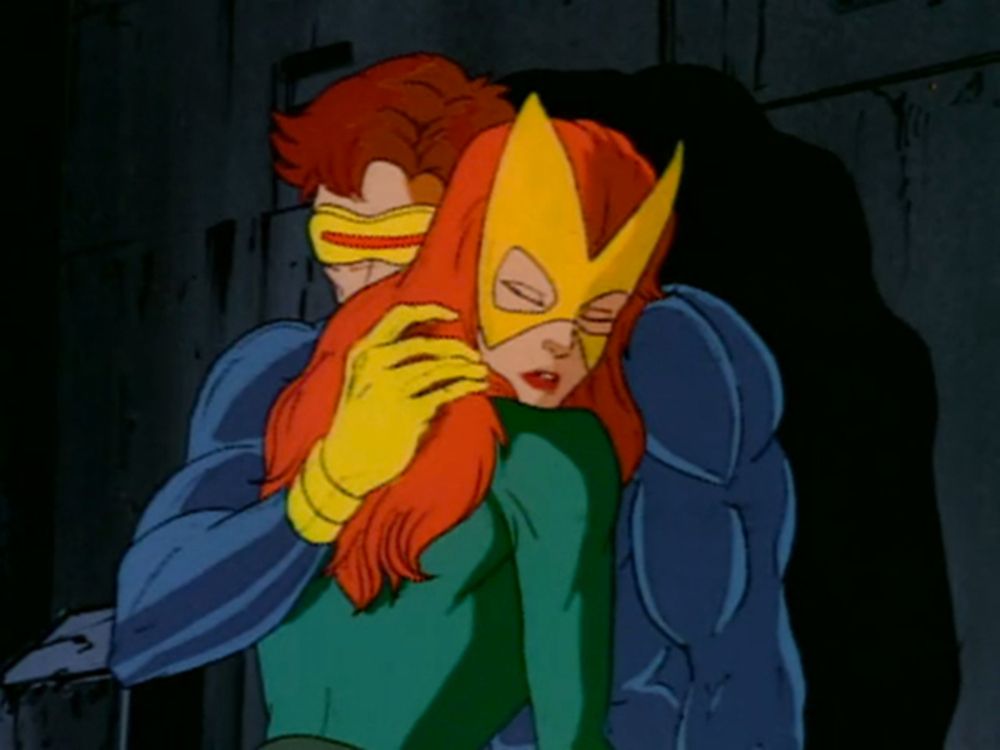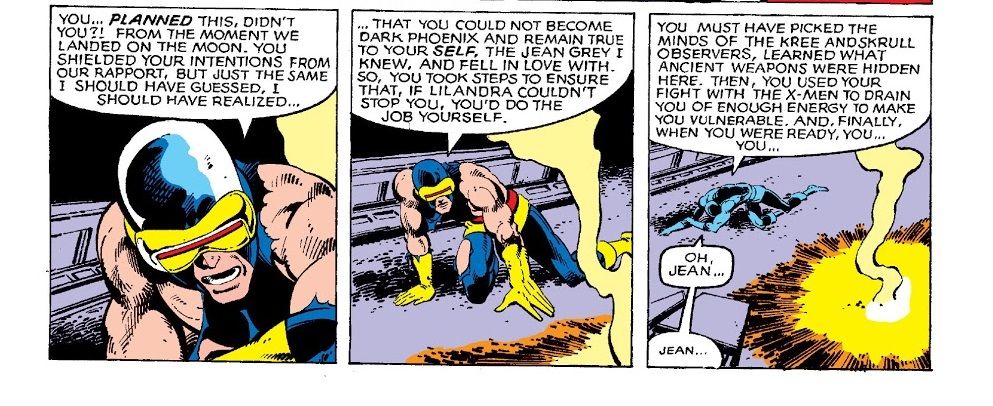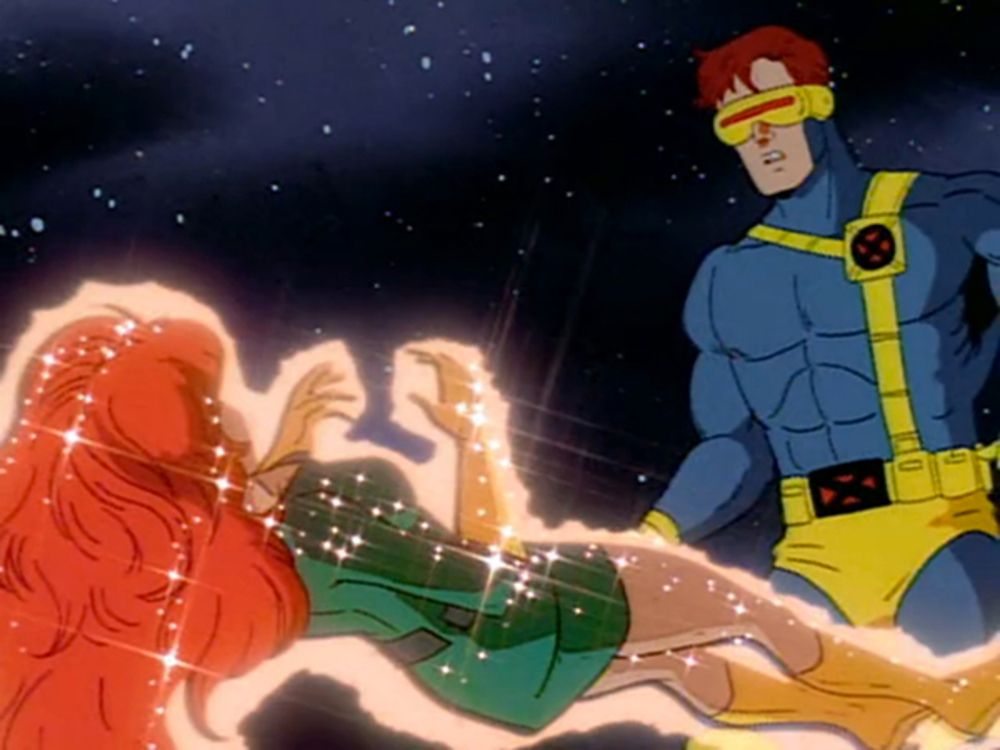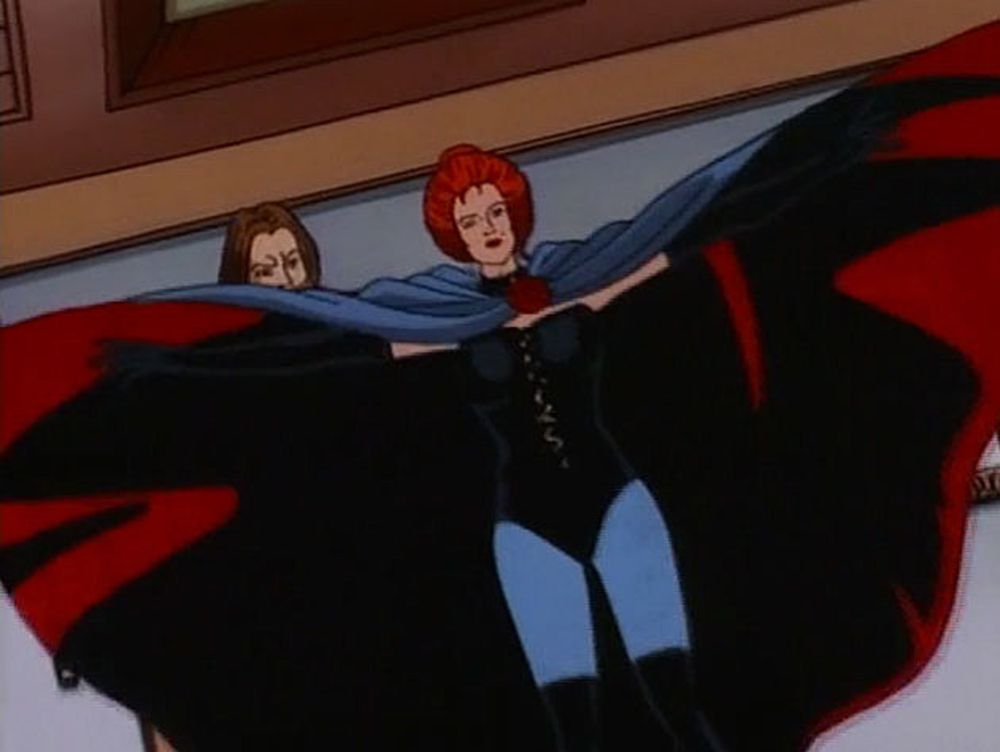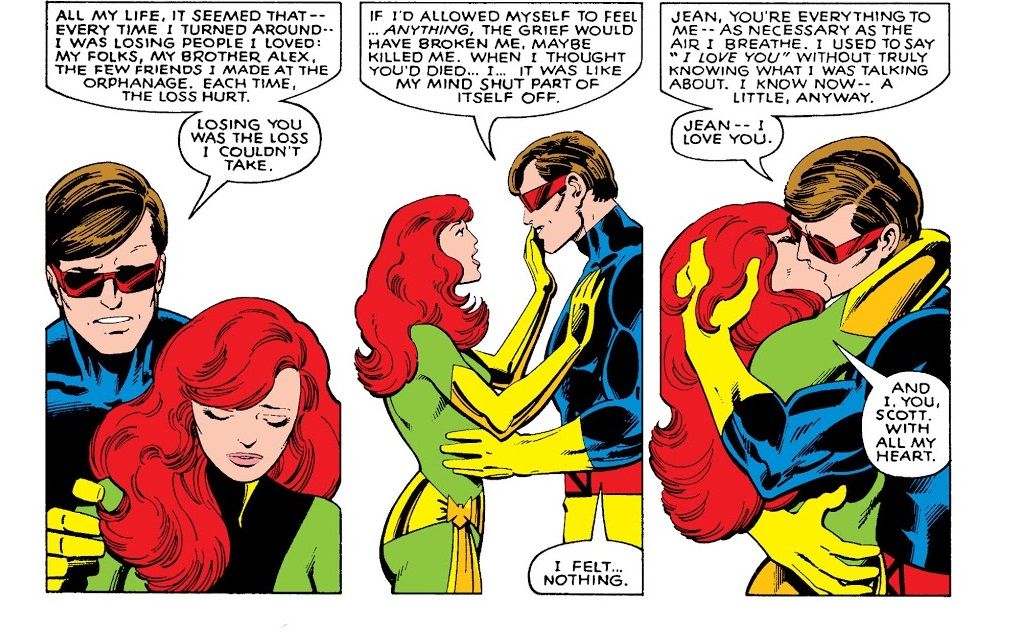Welcome to Adventure(s) Time's eighty-ninth installment, a look at animated heroes of the past. This week, we're revisiting the very first adaptation of Chris Claremont and John Byrne's classic "Dark Phoenix" storyline. Unlike a certain film hitting theaters, it's a story that maintains the cosmic scope of the original. And, doesn't drop important figures, such as Lilandra and the Hellfire Club. If you have any suggestions for the future, leave a comment or contact me on Twitter.
Debuting on November 12, 1994 (and finishing up on November 26, 1994), X-Men: The Animated Series adapts Uncanny X-Men #129-137 over the course of four episodes. The first chapter wastes no time getting into its version of "The Dark Phoenix Saga." Remember when Jean died at the end of the previous Phoenix storyline? Well, as we see in the opening -- she's back!
Now, if the FOX network had aired the episodes in order, this wouldn't be such a shock. Another episode actually did establish Jean's survival, it just suffered from numerous production delays. FOX, now impatient with the idea of X-Men episodes "having" to be run in a certain order, simply went ahead with the episodes in the can. So, continuity be gosh-darned (this is Saturday morning TV), Jean Grey's back from the dead.
The problem with the opening chapter is just how quickly it burns through the months of setup in the comics. The producers acknowledged in interviews at the time that, when examining the story, they realized sticking with the comics was the only way to go. Altering one plot element just causes a dozen others to fall apart. (Just imagine if the film producers recognized this.)
An admirable approach to the material, sure. But, the months-long escalation in the comics of the Hellfire Club invading Jean's mind, altering her sense of reality... all this is dramatized in literally a few minutes. Also missing are the X-Men going undercover at the Hellfire Club's high society party, a favorite sequence from the comics.
And, let's not forget the comics subplot set in Chicago, introducing Kitty Pryde. As established here earlier, Marvel had no interest in presenting Kitty on the show.
The opening episode does follow the basic concept of the storyline, however. Jean Grey's Phoenix powers are making the X-Men uncomfortable; meanwhile, a shadowy organization is seeking out young mutants. Cyclops interrupts the Hellfire Club's attempt to abduct Dazzler at a nightclub.
While she's saved, the X-Men can't stop the Club's Inner Circle from exploiting its hold over Jean. Soon enough, she's joined her "husband," the Club member Mastermind.
This actually requires more coincidences than the original story, which has Xavier locating Dazzler with Cerebro and sending a team of X-Men to her location. In the cartoon, Cyclops just happens to discover Dazzler while out at the clubs with Gambit. And Jean's response to his concern for Dazzler is irrational jealousy. This doesn't play as well as the original story, but it does establish rather quickly something's off with Jean.
The next episode is far more loyal to the source material -- to the point that several shots are lifted directly from John Byrne's artwork. The Inner Circle has taken the team hostage, with the exception of Wolverine. (He's been dropped down into the sewers by Inner Circle member Leland.) And, to the team's horror, they see Jean emerge as the Club's new Black Queen.
Comics fans witnessed several sequences from the original story, including Cyclops and Mastermind's psychic duel and Wolverine's battle from the sewers to the secret rooms of the Hellfire mansion.
A deviation from the original story actually works in the show's favor this time. In the comics, the White Queen has already died in a psychic battle with Phoenix by this point. In the show, she's alive, and not pleased with this other telepath joining the Inner Circle. Black King Sebastian Shaw casually dismisses the White Queen, prompting fast retaliation. She joins with Mastermind in his bid to replace Shaw as the Club's leader. It's an insight into the petty world of the Inner Circle, one of the unique aspects of the concept. (They could rule the world, but they're too busy fighting amongst themselves.)
In the next chapter, the story goes cosmic. Jean is now Dark Phoenix, the entity unwittingly unleashed by Mastermind. The X-Men are no match for her but also discover some hint of Jean must remain. (How else do you explain why Dark Phoenix didn't kill them when she easily could?)
Confused, Dark Phoenix flies to the D'Bari Star System and feeds on a star, destroying the entire star system. A Shi'ar Star Cruiser crew observing the event is her next target. (But, once again, as this is Saturday Morning, she isn't allowed to have any confirmed kills.)
This is a sanitized version of a scene from Uncanny #135. And, it's become quite the infamous sequence. The idea of Jean feeding on a sun -- destroying the inhabited planet nearby -- was actually tossed in by John Byrne when penciling the issue. Editor-in-chief Jim Shooter, reportedly, was stunned. And, when reading the concluding chapter months later, felt as if giving Jean a happy ending was just too cheap.
So, consequently, Jean had to die in the comics. But, we're getting ahead of ourselves.
The subsequent scenes play out similarly to the comics. Beast devises a psi-scrambler. Cyclops senses she’s returned home. Literally home: The one she grew up in. A disappointing edit, here, is the removal of Mr. and Mrs. Grey meeting their daughter, now an unspeakable dark goddess. (It's also a glaring omission from the first film adaptation of the story. We even saw her parents in the opening act! They'd already cast the actors!)
Most of the remaining beats in the cartoon are identical to the comics, though. Including Wolverine’s reluctance to kill Jean, even when he knows he has to do it. (A conflict X-Men: The Last Stand tried to milk for most of the film.) Professor Xavier defeats Dark Phoenix on the Astral Plane, but we're in for one more cliffhanger.
Suddenly, a Shi’ar craft arrives. Xavier's love, Lilandra, appears, announcing Dark Phoenix must be destroyed. From here, we move on to the final chapter, a faithful retelling of Uncanny X-Men #137.
The Shi'ar declare Phoenix is too dangerous to exist. The X-Men obviously disagree. (Since she isn't responsible for any actual deaths in the cartoon, they have a more defensible position here.) Xavier evokes a duel of honor in order to prevent Jean's execution.
The Shi’ar teleports the X-Men to the Blue Area of the Moon where they agree to fight the Imperial Guard for Jean’s life. Cyclops is wounded in the duel, which causes the mental barriers in Jean’s mind to collapse. Dark Phoenix reemerges.
This is all from the comics. All recreated with care and reverence. That ending, however, would never fly on kids' TV. In the cartoon, we see Jean struggle with Dark Phoenix's influence.
She uses her powers to direct a Shi’ar craft to attack her body. The shock forces the Phoenix to break free of its dark nature. With Jean dying, the entity takes a piece of each X-Man’s life to revive her. When Jean awakes, the Phoenix flies away into the stars.
In the comics... Well, major portions of the comic had to be redone over a weekend. In order to appease Shooter's edict that Jean pay a price for Dark Phoenix's actions, Claremont and Byrne devised a quickie death scene. It required a star-destroying Kree weapon to just pop up out of nowhere on the moon. (Interestingly, years later, Chris Claremont scripted an issue of X-Factor speculating the weapon actually belonged to Apocalypse!)
The scene remains powerful, however. Jean realizes Dark Phoenix will always be a threat, having been exposed to humanity's dark nature. She chooses to commit suicide, for the good of her friends and all humanity.
Using a Shi'ar spaceship to fulfill this role is actually an improvement over the original sequence. For one thing, it doesn't feel as if some massive plot device is coming out of nowhere. It's also a nice moment when she allows the Shi'ar to fire. The story's clear they can't do anything unless she permits it.
Still, that sequence in the comics is memorable for the sheer emotion and for the bravery of telling a story with real consequences -- a rarity in the realm of superheroes. The cartoon, due to the limitations of its production, had to go with a pat conclusion. The story leading up to the moment is solid, but a happy ending doesn't have a shot at comparing to the original.
THE WRAP -UP
DESIGN-Y
The Black Queen wears colored leggings in the cartoon. Perhaps she foresaw the future of leggings as acceptable women's wear?
More likely, the animators did it to appease the censors by showing less skin. Oddly, the White Queen's legs remain bare.
APPROVED BY BROADCAST STANDARDS & PRACTICES
Censored moments not mentioned earlier include changing the Hellfire Club to the "Circle Club," and allowing Jean to remain clothed following her psychic battle with Xavier. A remarkable amount of the original story did make it to the screen, though, which is surprising.
FIRE INCARNATE
What many don't understand is that "Dark Phoenix" is the tragic love story of Cyclops and Jean. As the story escalates, Claremont and Byrne have numerous sequences of the couple declaring their love, emphasizing the tragedy to come. (A personal favorite is Cyclops explaining that, as an orphan who never felt truly loved, his relationship with Jean is literally his entire world.)
The first chapter of the adaptation is the weakest as it depicts their relationship poorly: Having to quickly establish something's off about Jean by making her crazy jealous robs some of the heart from the story. Luckily, the subsequent chapters recover fast. The story the fans remember is there, even if network censors would never allow the published conclusion.
It's hard to deny the network blunted the impact a bit by mangling the episode order, but the episodes hold up very well. The emotions are real, and the sweeping scope of the original story remains. The few times plot elements are toyed with, there's a justifiable explanation. To many, this will always be the story's best adaptation. And, it's highly unlikely the "grounded," muddled continuity of the films can compete.
So that’s all for now. I've begun a new review series on Chris Claremont's 2000 return to the X-Men on my blog! You can also check out my Kindle Worlds novels for free over at Smashwords.

